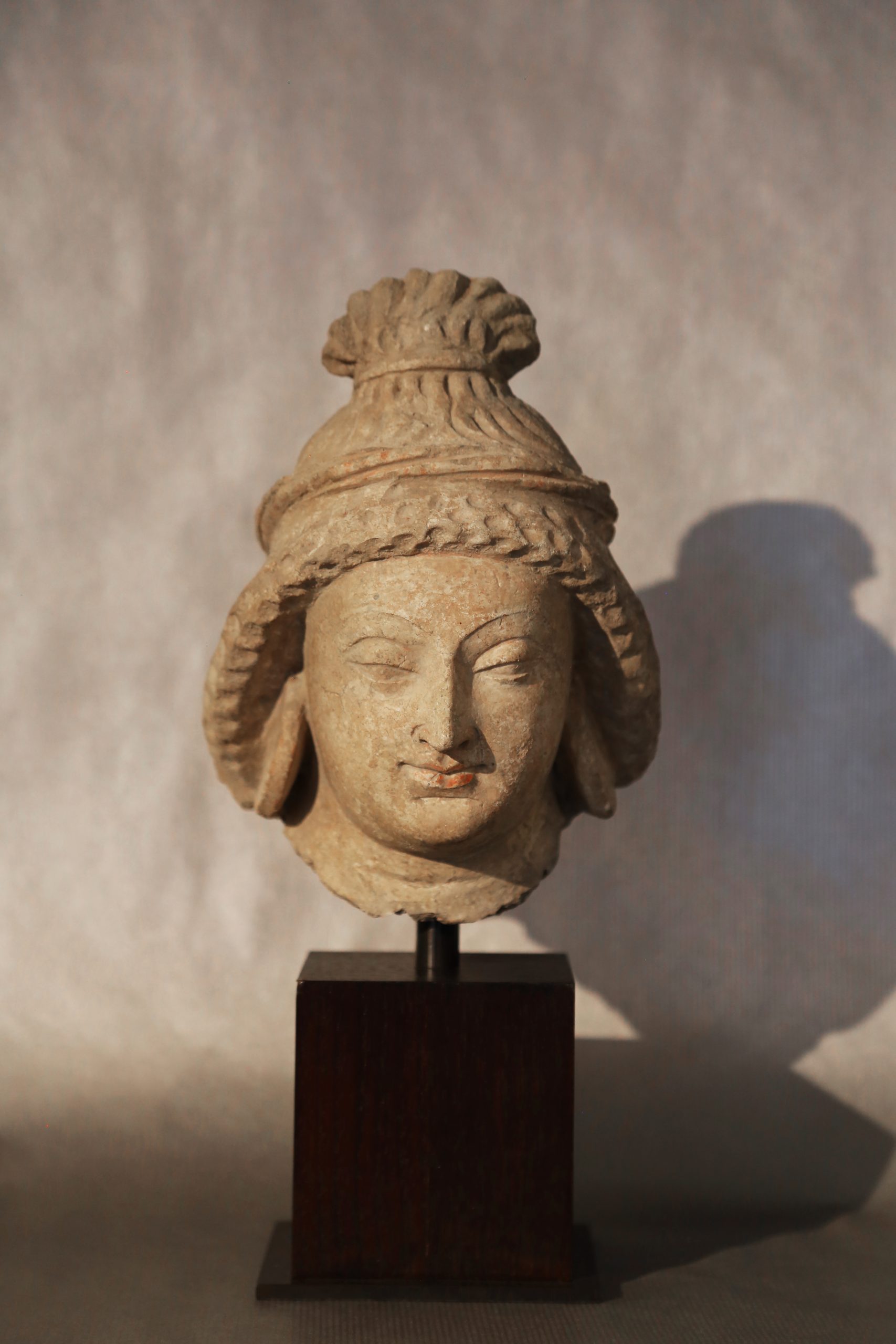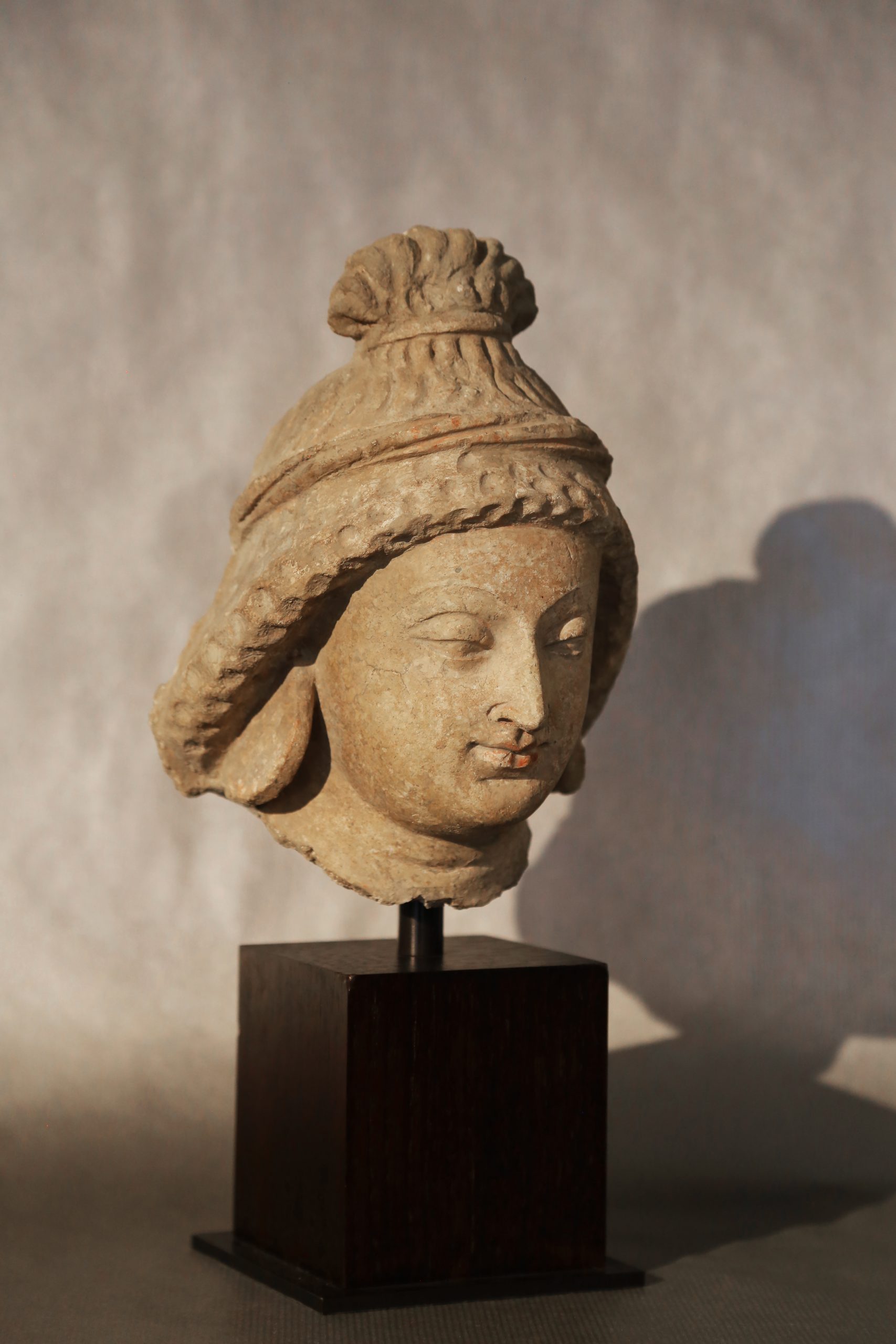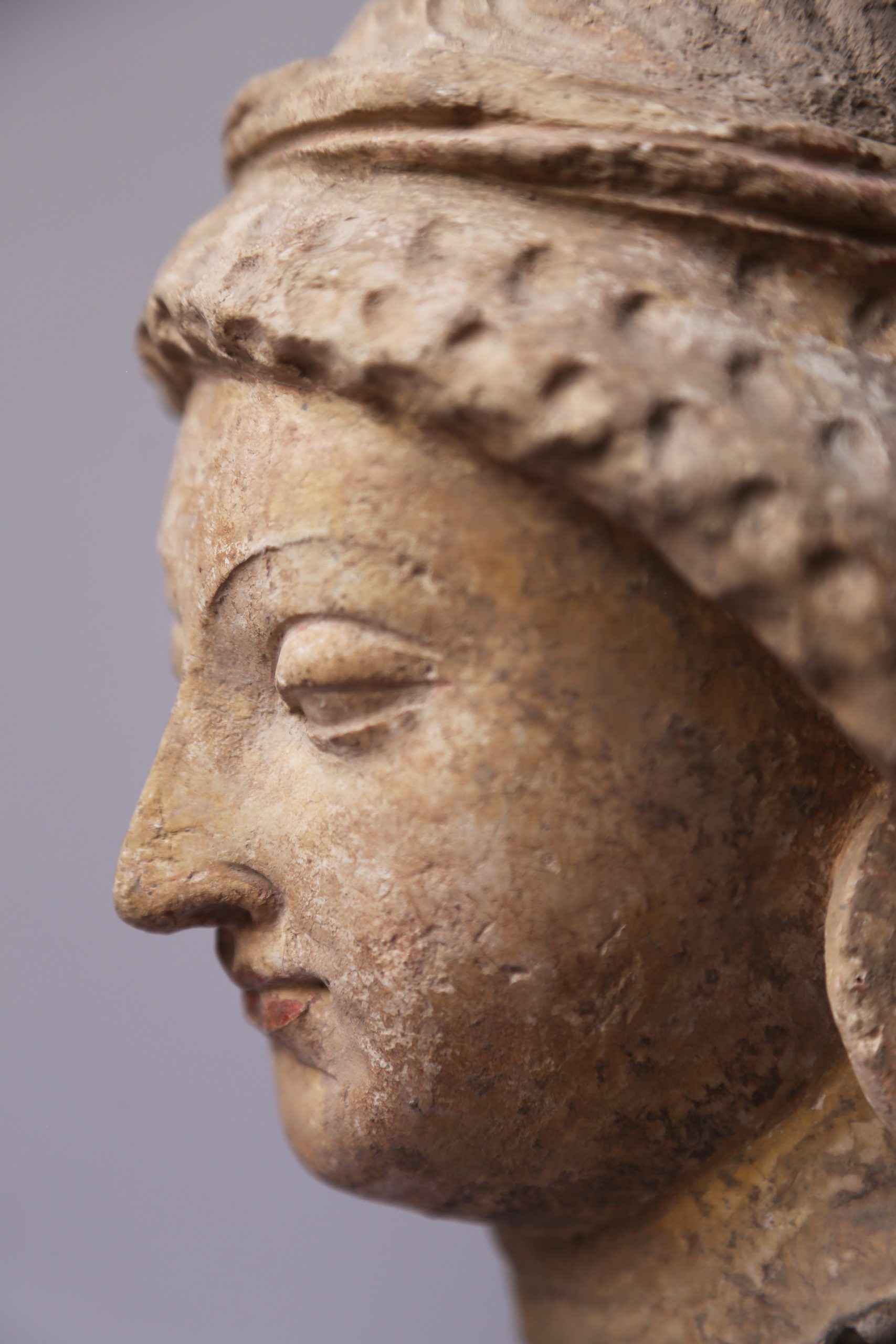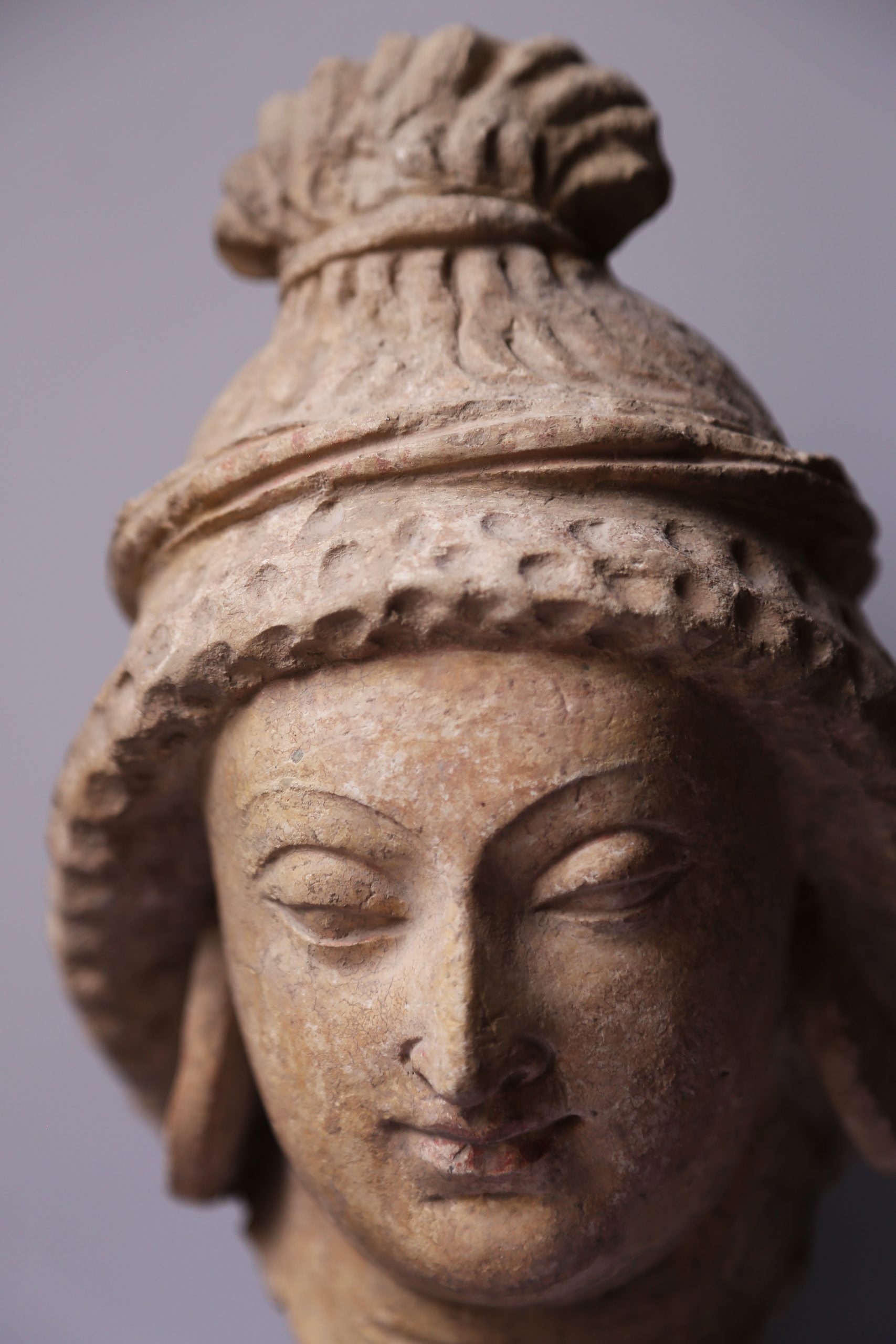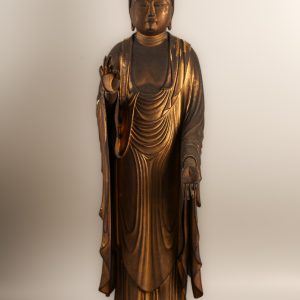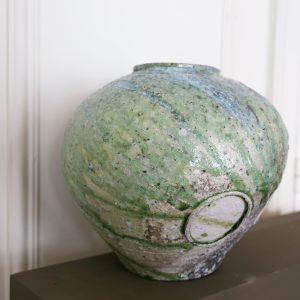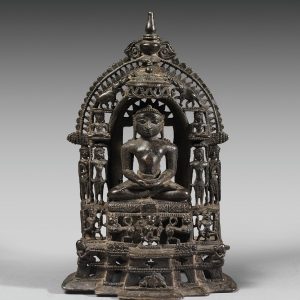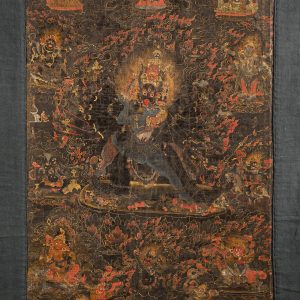Head of a donor
Polychrome stucco
Ancient region of Gandhāra
Circa 5th century
H: 22 cm or 8 ¾ in
Description
A devotee looking alike a bodhisattva
This donor has a remarkable face, drawing an almost perfect oval and imbued with serenity. The head, very slightly tilted, gives off according to the codes of “Greco-Buddhist” art of Gandhāra a feeling of fullness and piety. The eyelids, half-closed, are the sign of his deep meditation, while the mouth, small and fleshy, outlines a delicate smile. This expression is reminiscent of that of the stucco Buddha and Bodhisattva, made during the same period. The large drop earrings in the form of full discs (called kuṇḍala), the sophisticated hairstyle and the ethereal idealization of this head bring this lay devotee even closer to the bodhisattvas, beings of compassion who delay their Awakening.
A witness of the Art of Gandhāra found at the border of Afghanistan and Pakistan
Thin incisions characteristic of sites in Afghanistan, notably Hadda, outline the almond-shaped eyes, delineate the eyebrows, mark the nostrils, and accentuate the contour of the lips. We should also note as a distinctive feature of these works the depression in the middle of the chin, under the mouth. The hair, which can be found in several works of comparison, is set in a bun and consists of three parts. A first, oval in shape, emerges very widely from the skull and flares out, covering the ears. The cup marks, these small circular depressions covering this part of the coping, are also characteristic. A fabric band form a transition with a second part which is distinguished by fine ascending incisions; finally, a top bun of wavy locks is comparable to the knotting of the hair of figures in Greek stucco.
The stucco: a great freedom of treatment
Stucco was used brilliantly throughout Gandhāra craftmanship’s History, notably in the sites of Hadda and Taxila. The statues were made by using molds, the resulting shapes picked up with a spatula. This technique allows a lot of ease in the treatment and to obtain, as here, faces with an incredibly supple shape. The mouth, with its particularly sensitive production, is a fine example. Often, the finer stucco heads were fired separately and glued to the bodies with slush. This donor’s head was to participate in the decoration of the exterior courtyards of the monasteries, accessible to devotees. A thin slip – still very evident over the entire surface – covered the whole, concealing any disparity and bearing a rich polychromy of red, ocher and black, visible here at the level of the lips and the wide band surrounding the donor’s head.
Provenance: Private collection, Germany, since the mid 1950’s.

